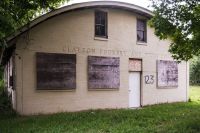Clayton Foundry & Siren Co.
Clayton Foundry & Siren Company, or simply Clayton, was a small Deland, FL based metalwork company founded by J.L. Clayton. Essentially a backyard project of his, the company was started after a few members of the fire department became interested in casting. They then set up a small foundry with a few men on the edge of town and cast sirens in addition to other parts for World War 2, making their own tools and using scrap metal to cast their products.[1]
History
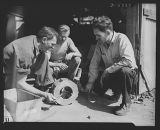
Clayton was founded in 1935 after J.L. Clayton of Daytona Beach, Florida, a city fireman, became interested in molding metals, particularly brass and aluminum in his spare time. Clayton would set up a one-man foundry in back of the fire station but would relocate to a small building on Jean St. in 1937, after he was contracted by the city of Daytona Beach to produce metal molds and pieces for the Department of Transportation, including 'manhole covers' which were used to cover entrances, to sewer shafts, underneath the streets of this city. This building still exists, and is now privately owned.
During the start of World War II, Clayton would quickly turn to war production, casting parts for aircraft and other miscellaneous weapons. Clayton would also start producing sirens in the early 1940s, which would last from then up until the end of the war. A larger foundry was built in Daytona Beach sometime in 1942, which is also still in existence today and is used for auto storage. No records of the company can be found past the mid 40s, and it can be assumed it closed up shop after World War II.
Products
Stationary electric sirens
Model 160
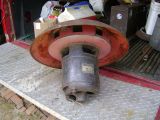
Essentially Clayton's main attraction, the Model 160 was a small, omnidirectional 8[2] port siren with a simple though reliable design, with the basic elements of a motor, rotor and stator, as well as a dome over the stator to protect it from the elements and to propagate sound. Model 160s often varied significantly in size, with no standardized housing or port ratio. It is unknown if there were any other civil defense sirens made by Clayton or the only civil defense siren they produced was the Model 160. Model 160s used Master Electric Co. motors and ran off of 110 volts, though this also likely varied. Very few Clayton Whirlwind Model 160s remain, with one being privately owned, though in extremely bad shape, an inactive unit in Cadwell, GA, and another privately owned unit that came from Rhine, GA which was partially restored by Jeb McCranie.
Vehicular electric sirens
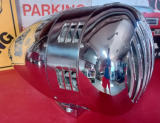
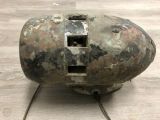
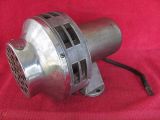
Clayton has made several vehicular sirens, each being 6 or 12 volts. These consist of the Model 300, which has a large, teardrop shaped motor cover, and a horizontal grille with small holes covering the rotor and no finger guards, the Model 400, the only 12 volt siren in the series, which is 7 port, has a small motor cover and a funnel shaped intake, the Model 405, essentially a smaller version of the Model 400 which has finger guards, unlike its larger counterpart, and the Model 506, which has a rounded conical motor cover and a horizontal grille, and has 2 finger guards between each port. An earlier variant of this siren exists, with a shorter rotor and stator with only 1 finger guard between each port. The tag is also in front of the stator on the later variants, unlike the earlier variants which have it behind the stator, and the later variants have a slightly longer motor cover.
- ↑ The Siren Board
- ↑ It is likely that they could be ordered with different port ratios, but it's likely that the siren was 8 port by default.
